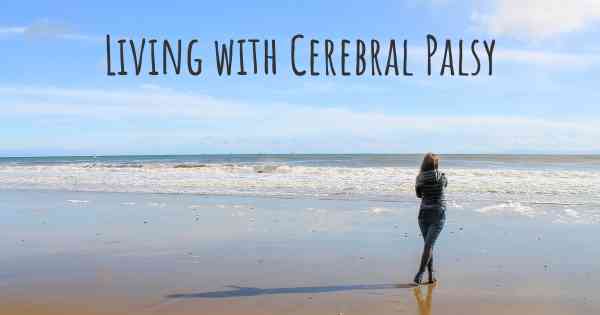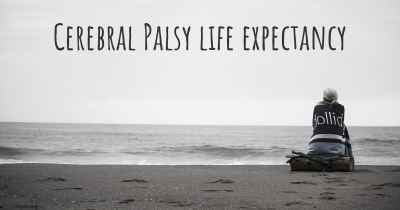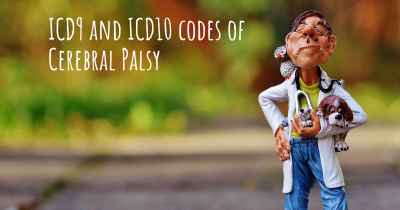Living with Cerebral Palsy. How to live with Cerebral Palsy?
Can you be happy living with Cerebral Palsy? What do you have to do to be happy with Cerebral Palsy? Living with Cerebral Palsy can be difficult, but you have to fight to try to be happy. Have a look at things that other people have done to be happy with Cerebral Palsy

Living with Cerebral Palsy
Cerebral Palsy (CP) is a neurological disorder that affects muscle control, movement, and coordination. While living with CP can present unique challenges, it is important to remember that individuals with CP can lead fulfilling and meaningful lives. With the right support, strategies, and mindset, it is possible to overcome obstacles and thrive.
1. Seek Medical Care and Support
If you or a loved one has been diagnosed with CP, it is crucial to establish a strong support network. Consult with healthcare professionals, such as neurologists, physical therapists, and occupational therapists, who specialize in CP. They can provide guidance, develop personalized treatment plans, and recommend assistive devices or therapies to improve mobility and independence.
2. Embrace a Positive Mindset
Developing a positive mindset is essential when living with CP. Focus on your abilities rather than limitations. Celebrate small victories and set realistic goals. Surround yourself with supportive and understanding individuals who uplift and encourage you. Remember that your worth is not defined by your condition, but by your character and achievements.
3. Engage in Physical Therapy
Physical therapy plays a crucial role in managing CP. Regular exercises and stretching routines can help improve muscle strength, flexibility, and coordination. Work closely with a physical therapist to develop a personalized exercise plan that targets your specific needs. Consistency and dedication are key to achieving progress.
4. Utilize Assistive Devices
Assistive devices can greatly enhance independence and quality of life for individuals with CP. Depending on your specific challenges, you may benefit from using mobility aids like wheelchairs, walkers, or canes. Additionally, there are various assistive technologies available, such as speech-to-text software, modified keyboards, or adaptive utensils, which can help overcome communication or dexterity difficulties.
5. Access Educational and Vocational Opportunities
Education and employment opportunities are important aspects of leading a fulfilling life. Individuals with CP have the right to accessible education and should explore inclusive schools or specialized programs that cater to their needs. Vocational training and career counseling can also help identify suitable job opportunities and accommodations that can enable success in the workplace.
6. Foster Emotional Well-being
Living with CP can sometimes lead to emotional challenges. It is important to prioritize your mental health and seek support when needed. Engage in activities that bring you joy and relaxation. Consider joining support groups or connecting with others who share similar experiences. Professional counseling or therapy can also provide valuable tools to cope with any emotional difficulties.
7. Build a Strong Support System
Building a strong support system is crucial for individuals with CP. Surround yourself with family, friends, and caregivers who understand your needs and provide the necessary support. Openly communicate your challenges and aspirations to ensure they can assist you effectively. Additionally, connecting with advocacy groups or online communities can offer a sense of belonging and valuable resources.
8. Embrace Adaptive Strategies
Adaptive strategies can help overcome daily challenges associated with CP. Explore techniques that work for you, such as breaking tasks into smaller steps, using assistive technology, or modifying your environment for accessibility. Embrace creativity and problem-solving to find innovative solutions that enable greater independence and participation in various activities.
9. Educate Others
Advocacy and education play a vital role in raising awareness and promoting inclusivity. Share your experiences and knowledge about CP with others to dispel misconceptions and foster understanding. By educating others, you can help create a more inclusive society that embraces diversity and supports individuals with CP.
10. Celebrate Your Achievements
Lastly, celebrate your achievements no matter how big or small. Recognize the progress you make, the obstacles you overcome, and the resilience you demonstrate. By acknowledging your accomplishments, you empower yourself and inspire others facing similar challenges.
Living with Cerebral Palsy may present unique obstacles, but with the right mindset, support, and strategies, individuals with CP can lead fulfilling lives. Embrace your strengths, seek appropriate medical care, and surround yourself with a strong support system. Remember, you are capable of achieving great things!
Posted Feb 20, 2017 by Michelle 1000








